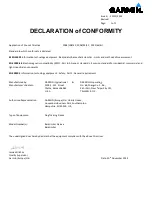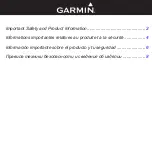
27
NOVO Technical Handbook - NE41 15013-02 v2.0
5.1.5 Global settings for sequence and call attempts
For all alarm events a maximum number of
cycles of sequence
can be configured
to ensure unit will move on from a failed alarm event. Furthermore, a
max total call
attempts
can be configured for the same purpose. These two parameters are
global
and will
override
any individual settings
5.2 Carrier type
Depending on the model, NOVO supports up to two carriers.
Model
IP
Mobile
PSTN
NOVO IP*/GSM
X
X
NOVO IP*/4G
X
X
NOVO PSTN/GSM
X
X
NOVO PSTN+
X**
X
NOVO PSTN
X
Table 13.
Carriers in NOVO models.
* IP requires ethernet cable.
** NOVO PSTN+ model uses Mobile carrier for CMP contact only, it does not support sending
user alarms over GSM.
If the IP is used as a carrier, the corresponding SIP account settings must be valid.
5.2.1 Auto carrier
When two carriers are available unit can be configured to use
Auto carrier
.
For NOVO PSTN/GSM the primary carrier will by default be GSM.
For NOVO IP/Mobile the default primary carrier will be MOBILE.
To define the primary carrier explicitly, the
service level
for the carriers can be set
through configuration. When using auto carrier, the unit will first attempt to use the
primary carrier and in case of failure it will change to the
secondary carrier
.
5.2.2 Max conversation time
To prevent the unit getting stuck in an alarm call if the receiver does not disconnect a
max conversation time
can be set.
5.2.3 Alarm code
To identify the unit to the alarm receiver each NOVO has a unique ID, the alarm code.
This alarm code can be configured in the following ways:
• The
serial number
of the unit can be used as alarm code.
• If the serial number is not used the alarm code can be defined for the current
call
type
.
• If the call type does not have an alarm code a
global
alarm code can be configured.
Some protocols used to communicate alarm information demand that the unit has an
alarm code.
















































